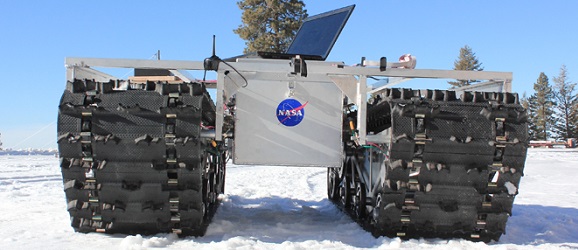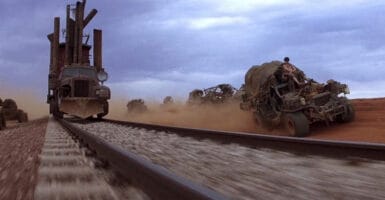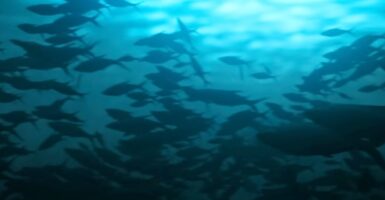Student-Designed NASA Rover Will Explore Greenland’s Ice Sheets
This article is more than 2 years old
 Call him GROVER. But don’t go thinking about blue Muppets that live down streets named Sesame. That’s far from the truth. But something near the truth is that GROVER stands for Goddard Remotely Operated Vehicle for Exploration and Research, or the Greenland Rover. This thing’s name has multiple meanings. That’s how you know it’s legit.
Call him GROVER. But don’t go thinking about blue Muppets that live down streets named Sesame. That’s far from the truth. But something near the truth is that GROVER stands for Goddard Remotely Operated Vehicle for Exploration and Research, or the Greenland Rover. This thing’s name has multiple meanings. That’s how you know it’s legit.
GROVER set out today to explore the highest points in Greenland, where surface ice levels have been at their lowest, until the mission is complete on June 8th. Its main purpose is to help scientists understand exactly what happened during last summer’s massive surface melting. (Band name note: Massive Surface Melting.) Obviously the 800-pound, solar-powered GROVER isn’t going to just shrug and say, “Global warming, bros.” First, it doesn’t have shoulders. Second, it’s got a ground-penetrating radar that will study how the snow accumulates in the area, shooting out radio waves so the researchers will be able to get a better idea of the layers beneath. Because the sun is always over the horizon, GROVER will be a busy robot for a lot longer than any mere humans could possibly handle it.
Developed in 2010 and 2011 by students involved in engineering boot camps at NASA’s Goddard Space Flight Center in Greenbelt, MD, GROVER is a far less expensive and bothersome alternative to humans on snowmobiles or using planes to survey the areas. Though he’s completely autonomous, the researchers will use the beginning of this mission to work any kinks out and make sure all the communication and equipment are functioning properly. He’ll be controlled via Wi-Fi from a base camp setup that GROVER will explore around before going off farther north, where communications will switch to satellite. It will be able to transmit data real time, traveling at 1.2 mph, though most of the research will be recovered once the mission is complete.
“GROVER is just like a spacecraft but it has to operate on the ground,” said Michael Comberiate, a retired NASA engineer and manager of the boot camp. “It has to survive unattended for months in a hostile environment, with just a few commands to interrogate it and find out its status and give it some directions for how to accommodate situations it finds itself in.”
Every cool thing we talk about was made by students. And don’t expect silence after the mission is done. This design, which was perfected by NASA at Boise State University, seems like it would be adaptable to almost any environment. Except under my bed.












